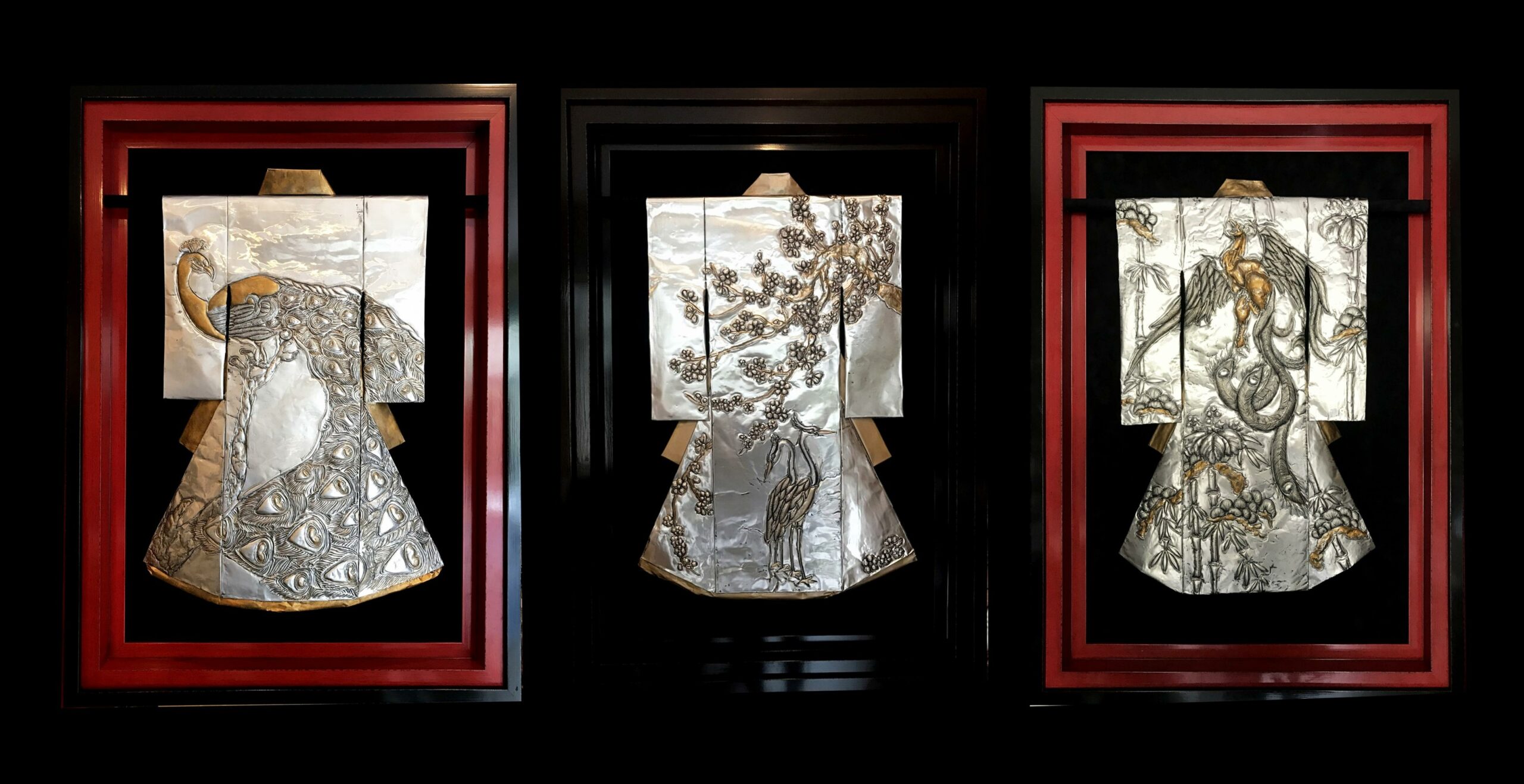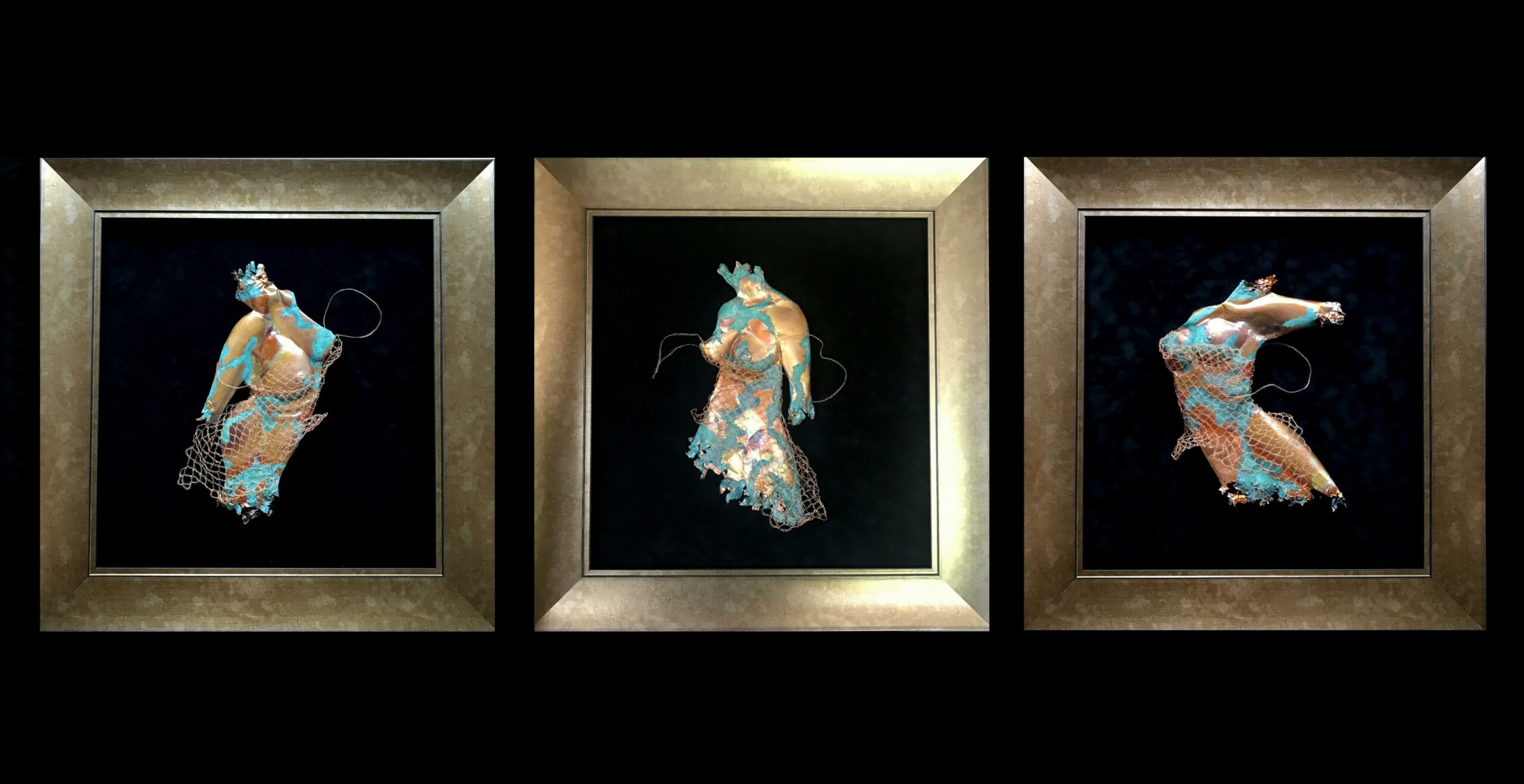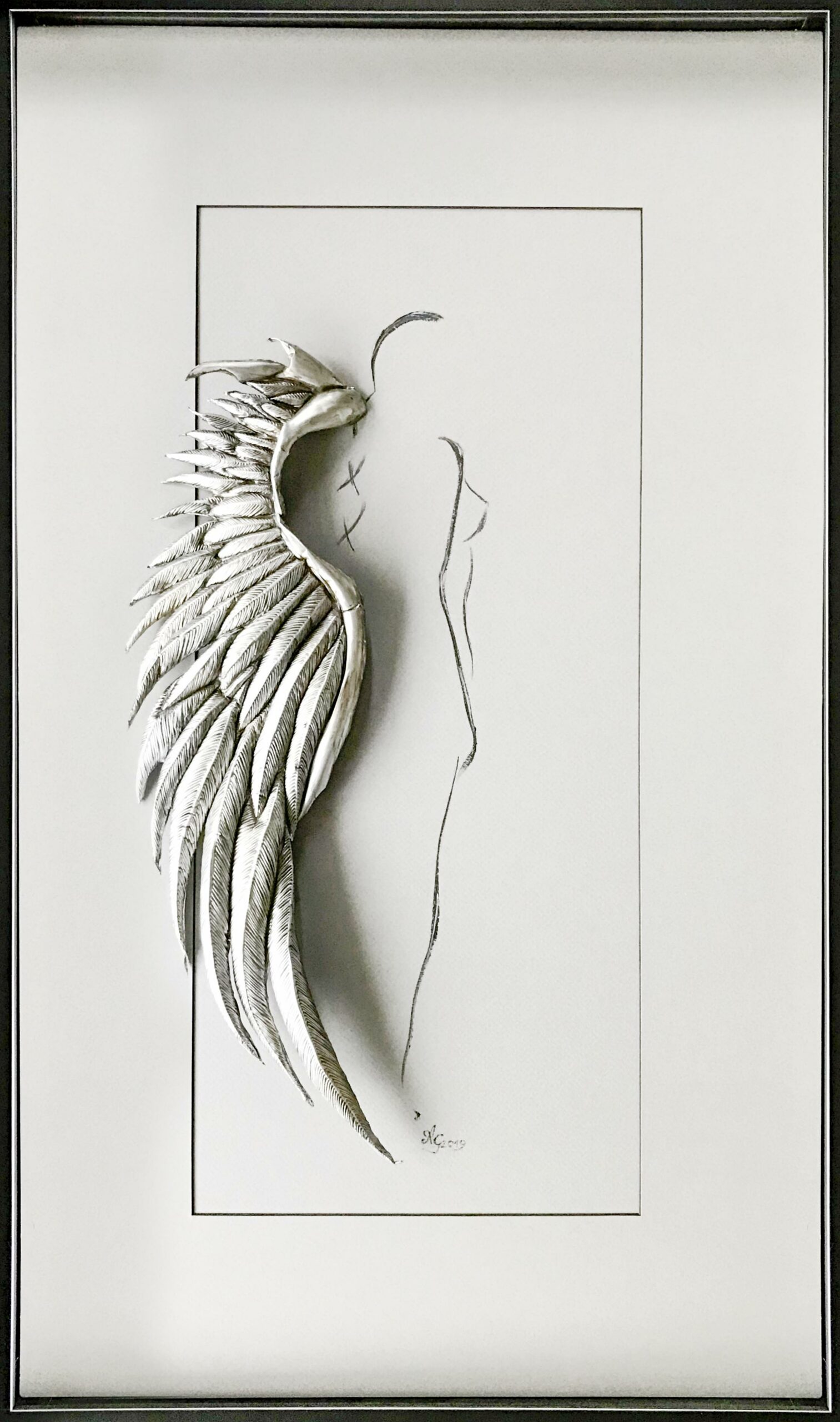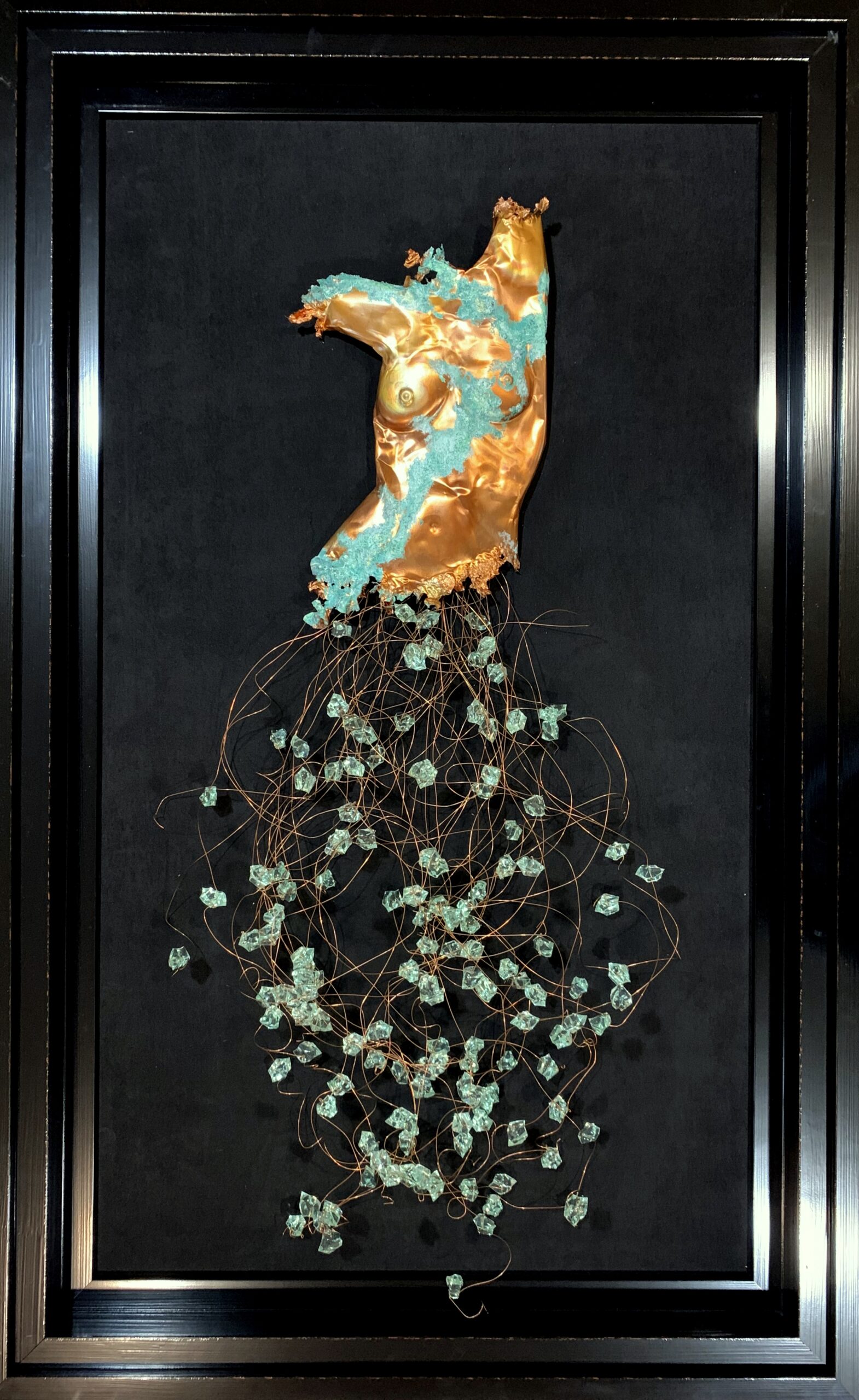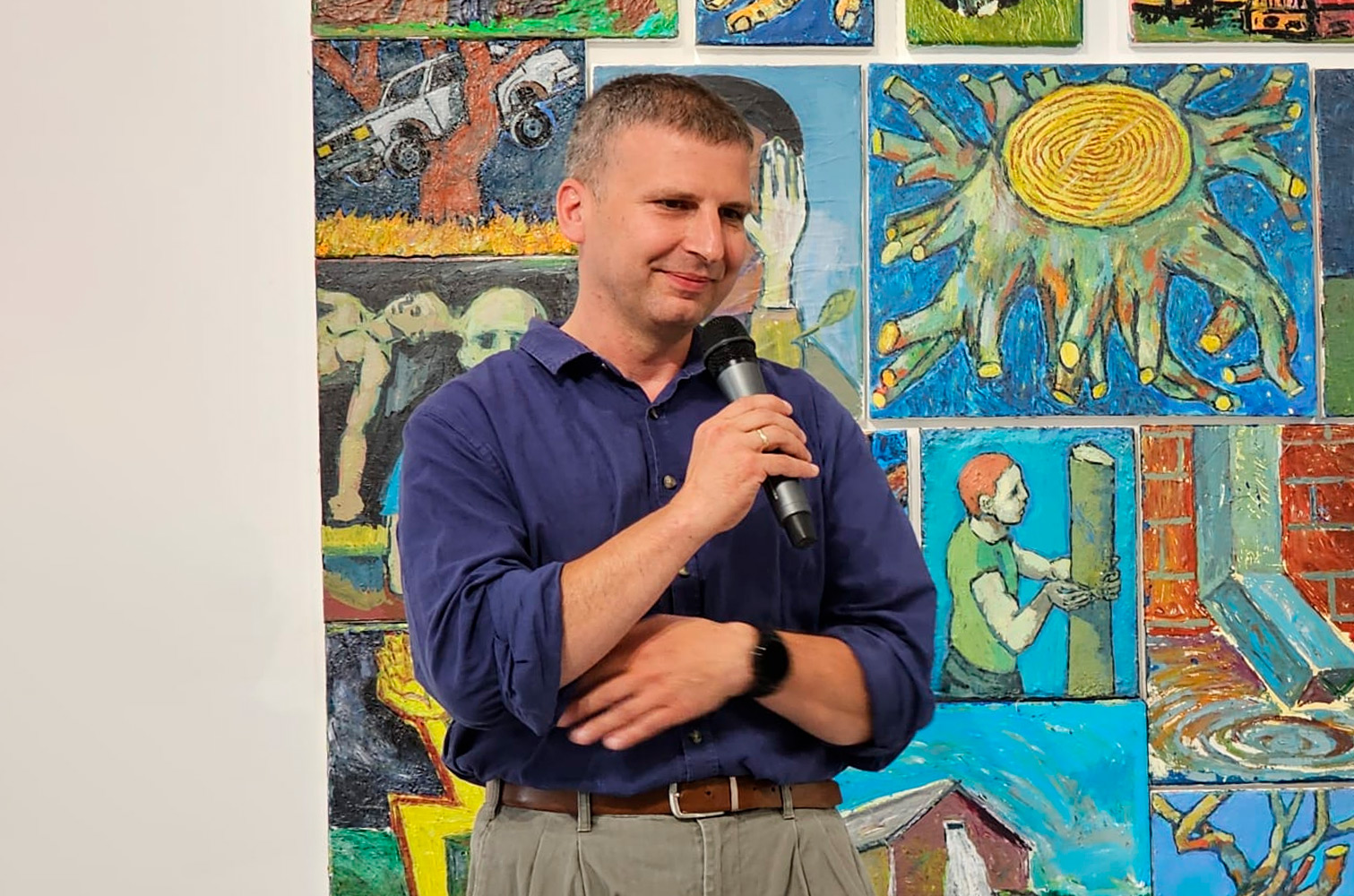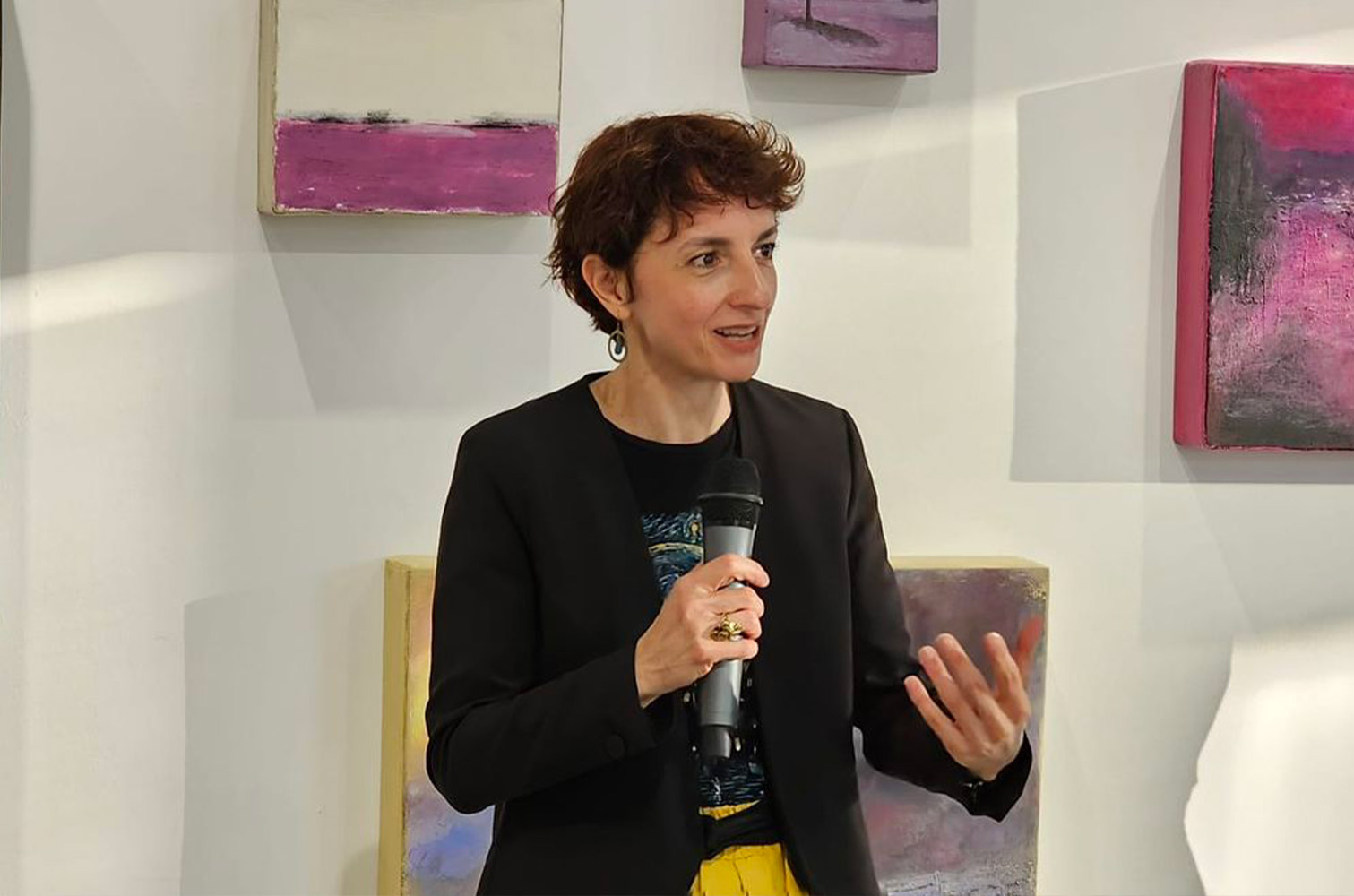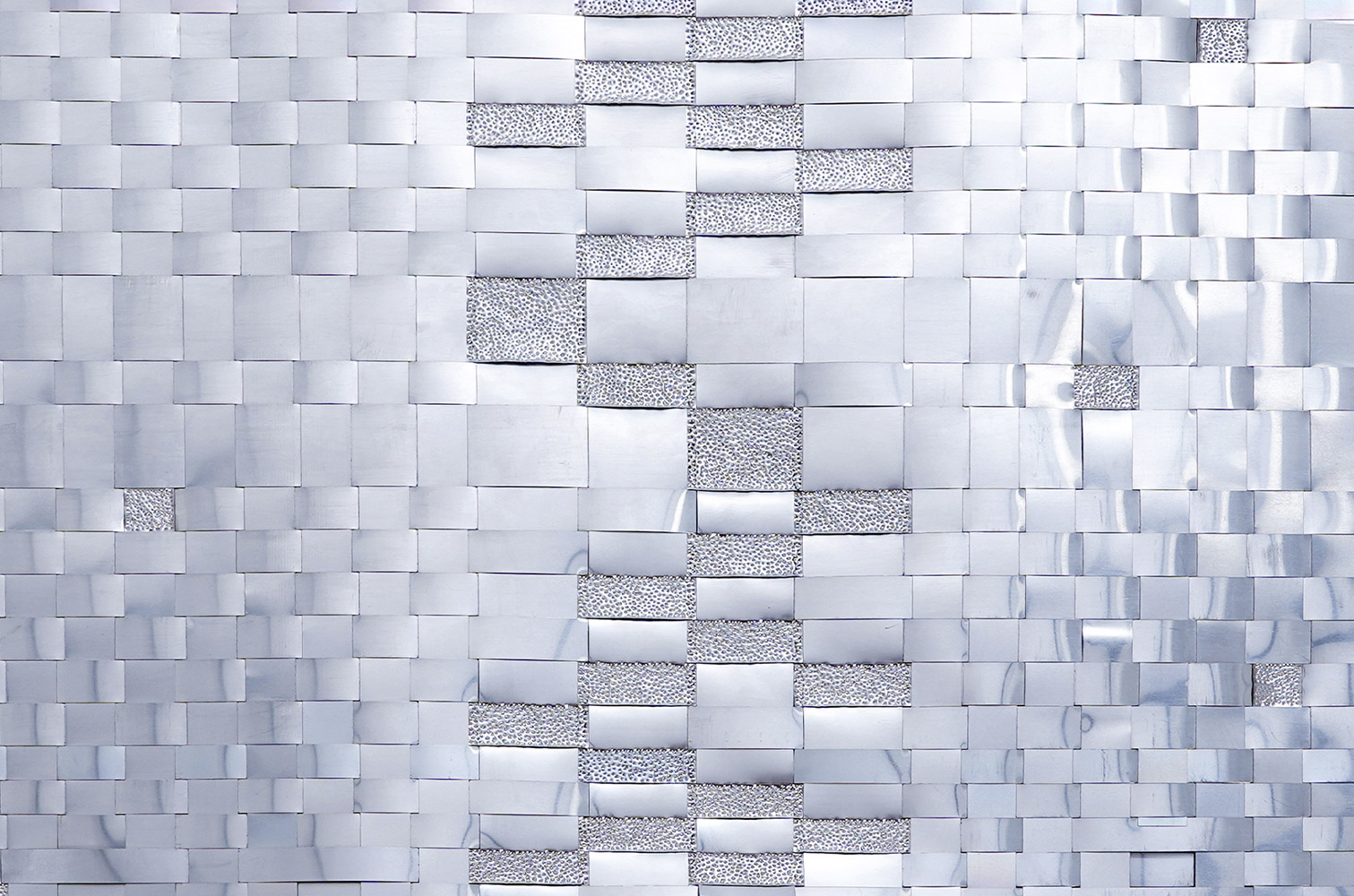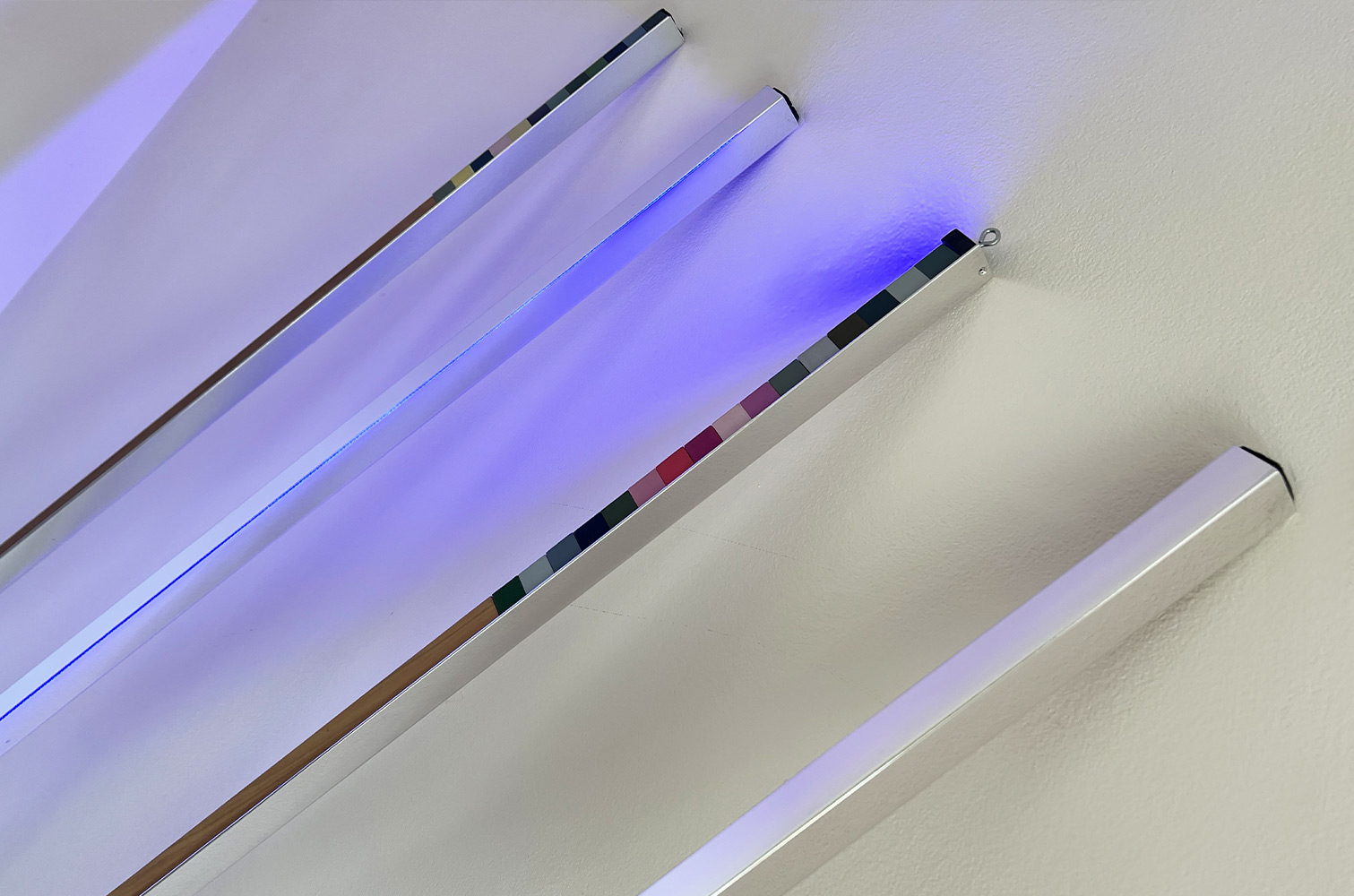COMEL AWARD Vanna migliorin 2023
Interview with Anna Godlewska
by Dafne Crocella
She was born in 1970 in Sosnowiec , Poland. She graduated from Silesian University and comes from a family of artists. Always fascinated by three-dimensional forms and art, her current passion is repousse, she loves making modern metal ornaments using ancient techniques. She gives life and shape to the metal using cold pressing. She has exhibited her works in Poland and abroad and received awards and recognition in France and Germany.
Your work Asami, Morning Beauty, was selected among the 13 finalists of the 10th edition of the Comel Award. It is a work belonging to the ONNA series. Can you tell us something about this series? Where did the inspiration to work on this theme come from?
The ONNA series is about the diversity innate in female nature, intimacy, and the naturalness that sometimes intimidates. The works depict a female figure wrapped in a kimono. The kimono is decorated with ornaments that function as talismans that bring good luck or protect against evil in Japanese culture. ONNA means woman in Japanese; in Polish, ONA is the personal pronoun – she.
Wedding Quotes
Your work is conceptually divided into several series in which you address themes related to the female universe, from the world of myth (in the series The Rose of the Cosmos) to historical figures such as female warriors or women related to art as in the series And God Created the Warrior Woman and Fine Arts. Do each of these series refer to particular moments in your expressive research, or do you happen to pursue multiple projects over time?
Women are the protagonists of my works. I believe that although the value system, laws, and ideals have changed over the centuries… the Mother Goddess has always represented an idea of perfection and power, the very essence of existence. There is no exact and straightforward definition of womanhood. This diversity is our greatest asset. Therefore, every culture shows femininity by emphasizing different characteristics, and in my art, I try to highlight them in their plurality. The “ONNA” series is dominated by sensitivity, delicacy, and coquetry. The series “The Rose of the Cosmos” is a tribute to Woman – Goddess – Mother Earth. In “And God Created a Woman Warrior,” I presented profiles of women from different historical periods and different cultures, emphasizing their strength, courage, and struggle against stereotypes. This led to the image of Nakano Takeko – a female samurai, Wetamo – a female Indian chief, and a Polish soldier – Joanna Żubr – the first woman awarded the Silver Cross for Military Virtues. In the “Community of Fine Arts” Series, I enhance the work and creativity of women, from Frida Kahlo to Edith Piaf to Zaha Hadid.
Each series is related to my life: if I feel helpless, I look for protective talismans, such as those in Japanese symbols and ornaments. If eroticism and passion dominate, more sensual nude works are born. I look for heroines with these characteristics when I feel like a warrior,. If I want to emphasize that women have their own secrets, I get the idea of the “Nü shu” series, which takes inspiration from a system of signs created more than 400 years ago by the women of the Yao minority who lived in Hunan in China. Using this “language,” mothers expressed wedding wishes for their daughters; they could also communicate with friends and talk about their intimacy and hidden feelings. I usually do one series a year, I often return to the old series, depending on my mood.
Several references to Japanese culture emerge in your research. What is your relationship with this land? And in particular, what is the value of the kimono, to which you dedicated the entire Wedding Quotes series in your artistic research?
I have been fascinated by Japanese culture and tradition—especially kimonos, their different categories, and ornaments, for years.
In June 2019, the “To – life – Kotobuki” kimono received a special award at the NanoArt competition in Paris. Since the beginning of time, people have used symbols to communicate with each other, and I find that the decorations and patterns on kimonos are rich in symbolism, especially Uchikake wedding kimonos, are embroidered with protective images and are supposed to bring happiness, success and love. This is not just any robe, it is a talisman that enchants reality.
Rose of the Cosmos, 2019
The ONNA Series is also dedicated to the image of the kimono, here we find the work divided into two technical aspects: on the one hand, the lightness of a stroke that hints at the silhouette of a female body, and on the other hand, the engraving work on the aluminium that composes the kimono. Two different techniques that find a refined harmony in your works. Where does this suggestion come from?
I often combine sketching and metalwork in my works. These two different techniques, completely opposite, show my emotions and temperament.
Because womanhood consists of two different poles: fragility and strength, leniency and high demands, and the need for support and extraordinary resourcefulness, seemingly incompatible elements in my paintings suddenly correspond perfectly with each other. Engraving, shaping, and adding a third dimension to such delicate metals requires a lot of patience because one can easily irreparably damage the thin metal sheet. Sketches sometimes supplement my poetic installations, but I constantly look for new solutions, combining metal with other elements. Regardless of its workmanship, metal is always an untamed, fascinating, and, therefore, magical material.
Images of birds return frequently in your works, from cranes to herons to peacocks, wings, and feathers. What does the world of birds symbolize for you?
Angel wings in metal are a metaphor for our lives, where lightness and even recklessness meet common sense and the difficulties of daily life. To us women sometimes wings weigh so much.
I often engrave birds in my works, from the mythical Phoenix to cranes, which are all very clear Japanese symbols.
NuShu X, 2019
You treat metals mainly with the embossing technique. When did you start working in this way, and why? Besides aluminium in your works we sometimes find other metals, do you notice any differences in using one material rather than another? What does your choice depend on?
I have been working with metal for over a dozen years. I was looking for materials that are pliable and durable over time. Aluminium and copper can be shaped very well, and the engraving technique is very feminine. Aluminium is more capricious and requires delicacy, copper is harder but offers other possibilities when heated. It happens that I combine metal, for example, with natural stones, for example, in the work awarded a Special Mention in the Per Grazia Ricevuta competition as part of Oltre Le Vette in Belluno, Italy, in 2021.
Are there any artists you feel have influenced your work more than others?
I think my grandfather Piotr Kowalski, a sculptor, was the biggest influence on my work. I inherited his sensitivity and diligence. I love the works of Matteo Pugliese and Alina Szapocznikow, and I admire Egon Schiele’s sketches.
NuShu X, 2019
Are you working on any new projects?
I am continuing to pursue my experimental research with metals. Currently, the motif of Danae wet with pleasure has been with me for several months… I am fascinated by the thought of the genius of Zeus, who, to possess his beloved one secretly, took the form of a golden shower…a Master

